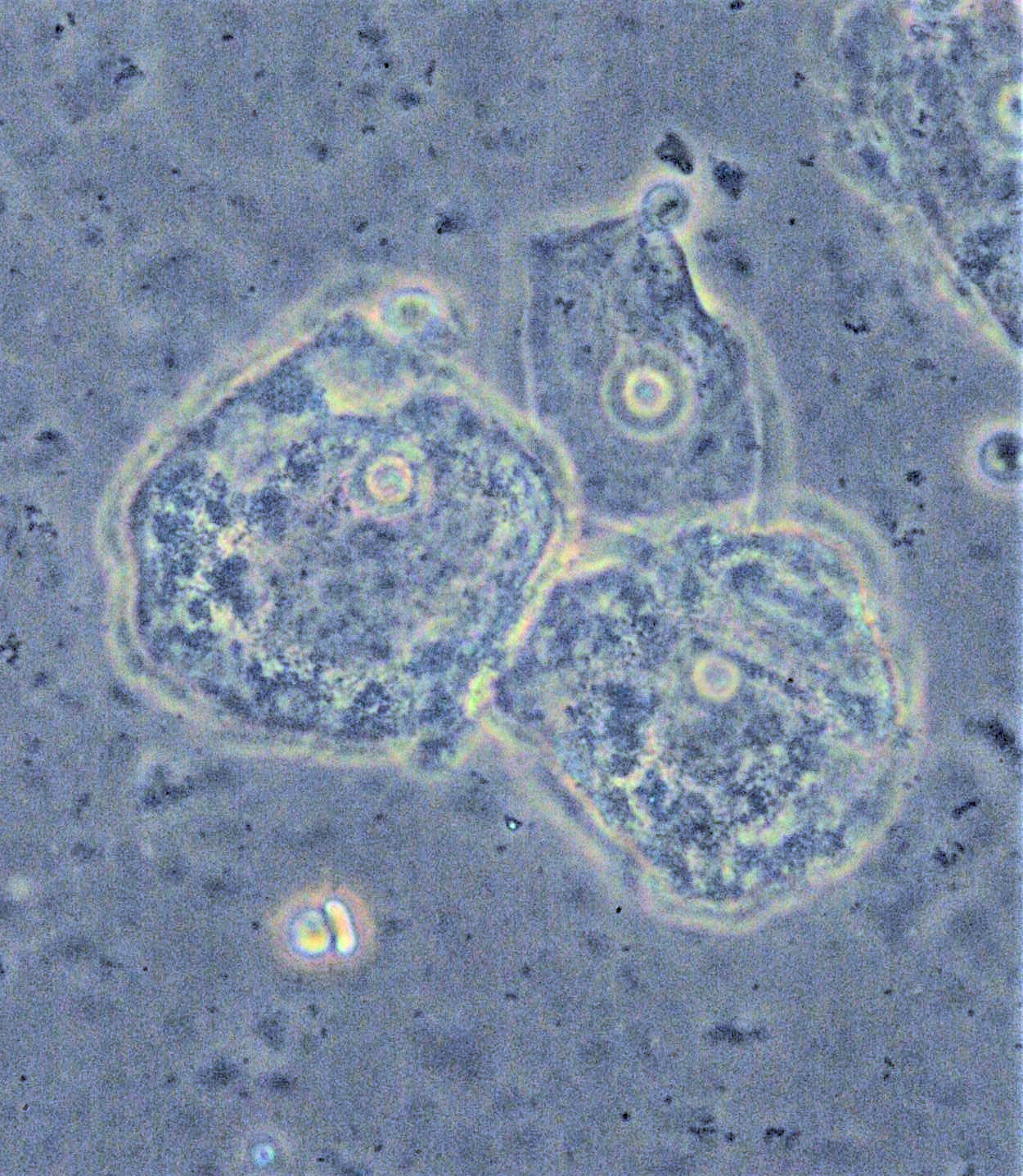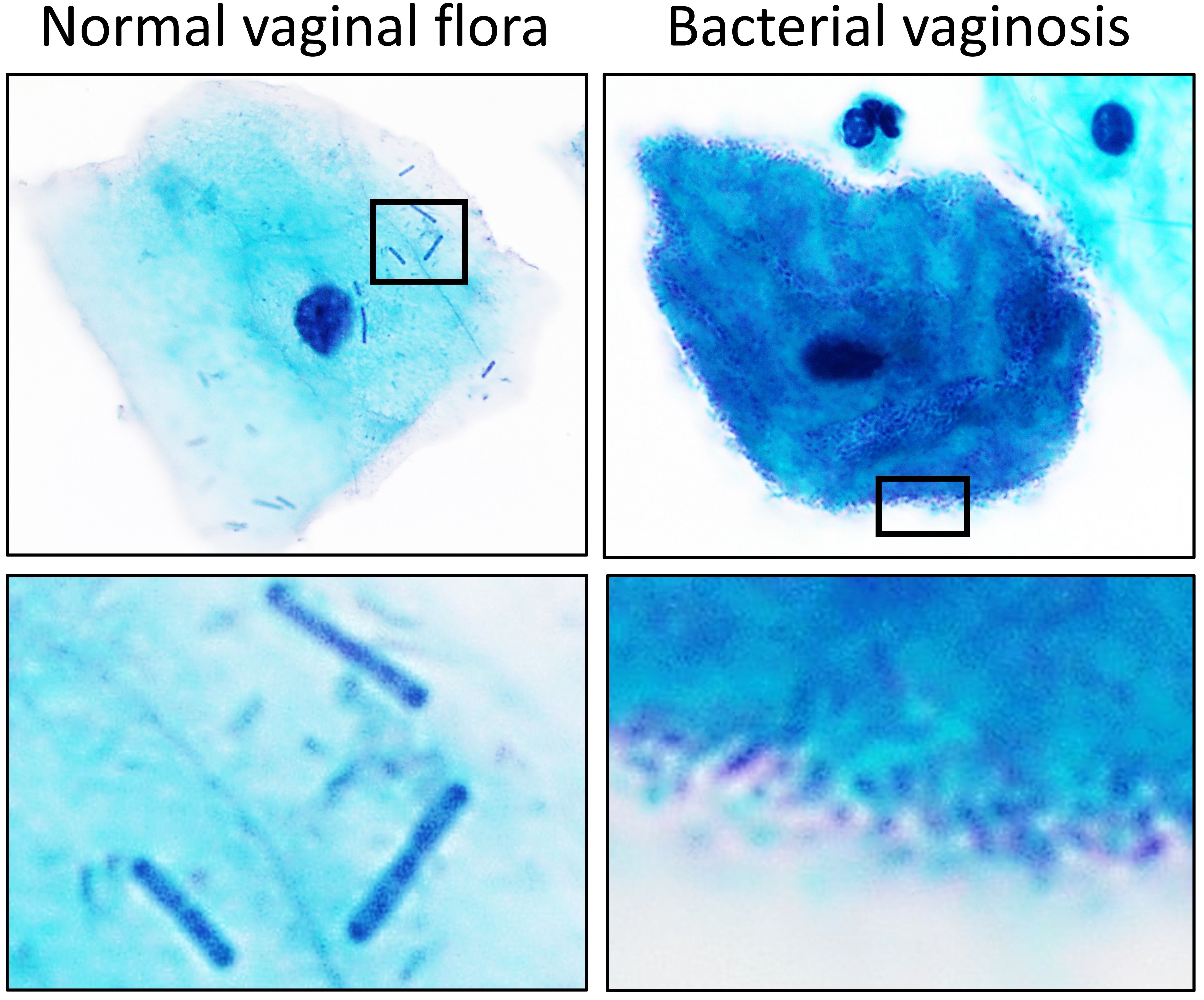|
Vaginosis
Bacterial vaginosis (BV) is an infection of the vagina caused by excessive growth of bacteria. Common symptoms include increased vaginal discharge that often smells like fish. The discharge is usually white or gray in color. Burning with urination may occur. Itching is uncommon. Occasionally, there may be no symptoms. Having BV approximately doubles the risk of infection by a number of sexually transmitted infections, including HIV/AIDS. It also increases the risk of early delivery among pregnant women. BV is caused by an imbalance of the naturally occurring bacteria in the vagina. There is a change in the most common type of bacteria and a hundred to thousandfold increase in total numbers of bacteria present. Typically, bacteria other than ''Lactobacilli'' become more common. Risk factors include douching, new or multiple sex partners, antibiotics, and using an intrauterine device, among others. However, it is not considered a sexually transmitted infection and, unlike gonorrho ... [...More Info...] [...Related Items...] OR: [Wikipedia] [Google] [Baidu] |
Vaginal Flora
Vaginal flora, vaginal microbiota or vaginal microbiome are the microorganisms that colonize the vagina. They were discovered by the German gynecologist Albert Döderlein in 1892 and are part of the overall human flora. The amount and type of bacteria present have significant implications for an individual's overall health. The primary colonizing bacteria of a healthy individual are of the genus ''Lactobacillus'', such as ''Lactobacillus crispatus, L. crispatus'', and the lactic acid they produce is thought to protect against infection by pathogenic species. Lactobacilli The primary colonizing bacteria of a healthy individual are of the genus ''Lactobacillus'' (90–95%), the most common being ''Lactobacillus crispatus, L. crispatus'', ''Lactobacillus iners, L. iners'', ''Lactobacillus jensenii, L. jensenii'', and ''Lactobacillus gasseri, L. gasseri''. Since the first description of lactobacilli by Döderlein, lactobacilli have been generally considered the gatekeepers of the ... [...More Info...] [...Related Items...] OR: [Wikipedia] [Google] [Baidu] |
Boric Acid (vaginal)
Boric acid is an antiseptic used as a vaginal administration, vaginal medication to treat vaginal infections including vaginal yeast infection, yeast infections, bacterial vaginosis, and trichomoniasis. It is administered as a capsule (pharmacy), capsule or vaginal suppository, suppository inserted into the vagina. The compound is not a pharmaceutical drug and is instead available over-the-counter drug, over-the-counter. Boric acid has shown comparable effectiveness to antifungals in the treatment of vaginal yeast infections. Clinical data for other vaginal infections are more limited. Side effects of vaginal boric acid may include watery vaginal discharge, discharge, burning, itching, erythema, redness, bleeding, and erosion (dermatopathology), erosive changes. They are usually mild and temporary. Boric acid can produce toxicity, toxic effects, including death, if taken oral administration, orally and/or at very high doses. The exact mechanism of action of boric acid as an antis ... [...More Info...] [...Related Items...] OR: [Wikipedia] [Google] [Baidu] |
Vaginal Discharge
Vaginal discharge is a mixture of liquid, cells, and bacteria that lubricate and protect the vagina. This mixture is constantly produced by the cells of the vagina and cervix, and it exits the body through the vaginal opening. The composition, quality, and amount of discharge varies between individuals, and can vary throughout the menstrual cycle and throughout the stages of sexual and reproductive development. Normal vaginal discharge may have a thin, watery consistency or a thick, sticky consistency, and it may be clear or white in color. Normal vaginal discharge may be large in volume but typically does not have a strong odor, nor is it typically associated with itching or pain. While most discharge is considered physiologic (represents normal functioning of the body), some changes in discharge can reflect infection or other pathological processes. Infections that may cause changes in vaginal discharge include vaginal yeast infections, bacterial vaginosis, and sexually trans ... [...More Info...] [...Related Items...] OR: [Wikipedia] [Google] [Baidu] |
Preterm
Preterm birth, also known as premature birth, is the birth of a baby at fewer than 37 weeks gestational age, as opposed to full-term delivery at approximately 40 weeks. Extreme preterm is less than 28 weeks, very early preterm birth is between 28 and 32 weeks, early preterm birth occurs between 32 and 34 weeks, late preterm birth is between 34 and 36 weeks' gestation. These babies are also known as premature babies or colloquially preemies (American English) or premmies (Australian English). Symptoms of preterm labor include uterine contractions which occur more often than every ten minutes and/or the leaking of fluid from the vagina before 37 weeks. Premature infants are at greater risk for cerebral palsy, delays in development, hearing problems and problems with their vision. The earlier a baby is born, the greater these risks will be. The cause of spontaneous preterm birth is often not known. Risk factors include diabetes, high blood pressure, multiple gestation (being ... [...More Info...] [...Related Items...] OR: [Wikipedia] [Google] [Baidu] |
Probiotic
Probiotics are live microorganisms that provide health benefits when consumed, generally by improving or restoring the microbiota in the gut. Probiotics are considered generally safe to consume, but may cause bacteria– host interactions and unwanted side effects in rare cases. There is some evidence that probiotics are beneficial for some conditions, such as helping to ease some symptoms of irritable bowel syndrome (IBS). However, many claimed health benefits, such as treating eczema, or curing vaginal infections lack substantial scientific support. The first discovered probiotic was a certain strain of bacillus in Bulgarian yoghurt, called '' Lactobacillus bulgaricus''. The discovery was made in 1905 by Bulgarian physician and microbiologist Stamen Grigorov. The modern-day theory is generally attributed to Russian Nobel Prize laureate Élie Metchnikoff, who postulated around 1907 that yoghurt-consuming Bulgarian peasants lived longer. A growing probiotics market has ... [...More Info...] [...Related Items...] OR: [Wikipedia] [Google] [Baidu] |
Metronidazole
Metronidazole, sold under the brand name Flagyl and Metrogyl among others, is an antibiotic and antiprotozoal medication. It is used either alone or with other antibiotics to treat pelvic inflammatory disease, endocarditis, and bacterial vaginosis. It is effective for dracunculiasis, giardiasis, trichomoniasis, and amebiasis. It is an option for a first episode of mild-to-moderate Clostridioides difficile infection, ''Clostridioides difficile'' colitis if vancomycin or fidaxomicin is unavailable. Metronidazole is available oral administration, orally (by mouth), as a cream or gel, and by slow intravenous infusion (injection into a vein). Common side effects include nausea, Dysgeusia, a metallic taste, Anorexia (symptom), loss of appetite, and headaches. Occasionally seizures or allergies to the medication may occur. Some state that metronidazole should not be used in early pregnancy, while others state doses for trichomoniasis are safe. Metronidazole is generally considered com ... [...More Info...] [...Related Items...] OR: [Wikipedia] [Google] [Baidu] |
Lactobacillus
''Lactobacillus'' is a genus of gram-positive, aerotolerant anaerobes or microaerophilic, rod-shaped, non-spore-forming bacteria. Until 2020, the genus ''Lactobacillus'' comprised over 260 phylogenetically, ecologically, and metabolically diverse species; a taxonomic revision of the genus assigned lactobacilli to 25 genera (see below). ''Lactobacillus'' species constitute a significant component of the human and animal microbiota at a number of body sites, such as the digestive system and the female genital system. In women of European ancestry, ''Lactobacillus'' species are normally a major part of the vaginal microbiota. ''Lactobacillus'' forms biofilms in the vaginal and gut microbiota, allowing them to persist in harsh environmental conditions and maintain ample populations. ''Lactobacillus'' exhibits a mutualistic relationship with the human body, as it protects the host against potential invasions by pathogens, and in turn, the host provides a source of nutrients ... [...More Info...] [...Related Items...] OR: [Wikipedia] [Google] [Baidu] |
Douching
A douche is a term for a device used to introduce a stream of water into the body for medical or hygienic reasons, or for the stream of water itself. Douche usually refers to vaginal irrigation, the rinsing of the vagina, but it can also refer to the rinsing of any body cavity. A douche bag is a piece of equipment for douching—a bag for holding the fluid used in douching. To avoid transferring intestinal bacteria to the vagina, the same bag must not be used for both an enema and a vaginal douche. Douching after sexual intercourse is not an effective form of birth control. Additionally, douching is associated with a number of health problems, including cervical cancer, pelvic inflammatory disease, endometritis, and increased risk of sexually transmitted infections. Etymology The word's first known use is in 1766. '' Douche'' came into English via French, from "conduit pipe" and ''docciare'' "pour by drops" to douche, from ''doccia'' water pipe, probably back-formation f ... [...More Info...] [...Related Items...] OR: [Wikipedia] [Google] [Baidu] |
Secnidazole
Secnidazole (trade names Flagentyl, Sindose, Secnil, Solosec) is a nitroimidazole anti-infective used to treat bacterial vaginosis and trichomoniasis. It is taken orally. Structurally it actually methyl-metronidazole. Effectiveness in the treatment of dientamoebiasis has been reported. It has also been tested against ''Atopobium vaginae''. In the United States, secnidazole is FDA-approved for the treatment of bacterial vaginosis and trichomoniasis Trichomoniasis (trich) is an infectious disease caused by the parasite ''Trichomonas vaginalis''. About 70% of affected people do not have symptoms when infected. When symptoms occur, they typically begin 5 to 28 days after exposure. Symptoms ca ... in adult women. It was approved in the United States in 2017. References Further reading * {{Agents against amoebozoa Nitroimidazole antibiotics Antiprotozoal agents ... [...More Info...] [...Related Items...] OR: [Wikipedia] [Google] [Baidu] |





